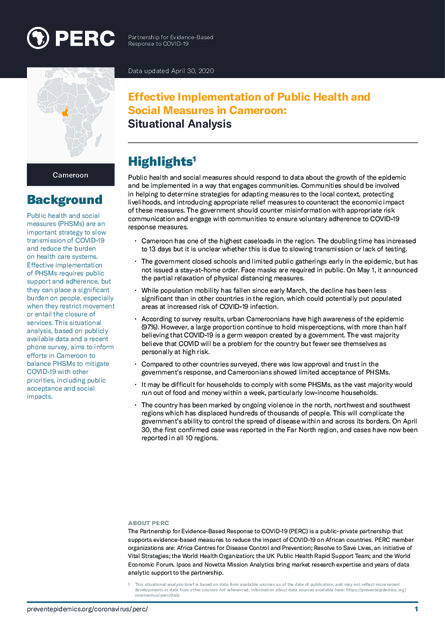
Public health and social measures should respond to data about the growth of the epidemic and be implemented in a way that engages communities. Communities should be involved in helping to determine strategies for adapting measures to the local context, protecting livelihoods, and introducing appropriate relief measures to counteract the economic impact of these measures. The government should counter misinformation with appropriate risk communication and engage with communities to ensure voluntary adherence to COVID-19 response measures.
• Cameroon has one of the highest caseloads in the region. The doubling time has increased to 13 days but it is unclear whether this is due to slowing transmission or lack of testing. • The government closed schools and limited public gatherings early in the epidemic, but has not issued a stay-at-home order. Face masks are required in public. On May 1, it announced the partial relaxation of physical distancing measures. • While population mobility has fallen since early March, the decline has been less significant than in other countries in the region, which could potentially put populated areas at increased risk of COVID-19 infection. • According to survey results, urban Cameroonians have high awareness of the epidemic (97%). However, a large proportion continue to hold misperceptions, with more than half believing that COVID-19 is a germ weapon created by a government. The vast majority believe that COVID will be a problem for the country but fewer see themselves as personally at high risk. • Compared to other countries surveyed, there was low approval and trust in the government’s response, and Cameroonians showed limited acceptance of PHSMs. • It may be difficult for households to comply with some PHSMs, as the vast majority would run out of food and money within a week, particularly low-income households. • The country has been marked by ongoing violence in the north, northwest and southwest regions which has displaced hundreds of thousands of people. This will complicate the government’s ability to control the spread of disease within and across its borders. On April 30, the first confirmed case was reported in the Far North region, and cases have now been reported in all 10 regions.